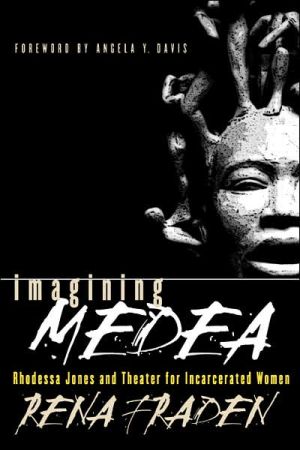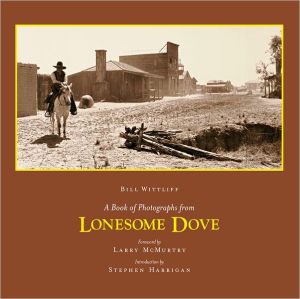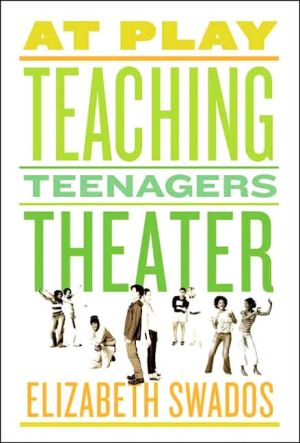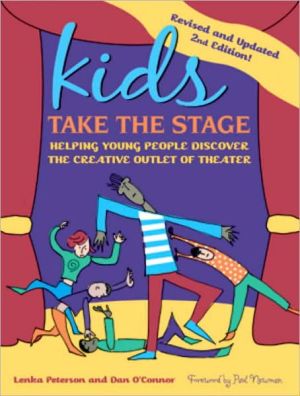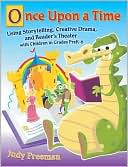Imagining Medea: Rhodessa Jones and Theater for Incarcerated Women
This ain't no Dreamgirls, Rhodessa Jones warns participants in the Medea Project, the theater program for incarcerated women that she founded and directs. Her expectations are grounded in reality, tempered, for example, by the fact that women are the fastest growing population in U.S. prisons. Still, Jones believes that by engaging incarcerated women in the process of developing and staging dramatic works based on their own stories, she can push them toward tapping into their own creativity,...
Search in google:
This ain't no Dreamgirls, Rhodessa Jones warns participants in the Medea Project, the theater program for incarcerated women that she founded and directs. Her expectations are grounded in reality, tempered, for example, by the fact that women are the fastest growing population in U.S. prisons. Still, Jones believes that by engaging incarcerated women in the process of developing and staging dramatic works based on their own stories, she can push them toward tapping into their own creativity, confronting the problems that landed them in prison, and taking control of their lives. Rena Fraden chronicles the collaborative process of transforming incarcerated women's stories into productions that incorporate Greek mythology, hip-hop music, dance, and autobiography. She captures a diverse array of voices, including those of Jones and other artists, the sheriff and prison guards, and, most vividly, the women themselves. Through compelling narrative and thoughtful commentary, Fraden investigates the Medea Project's blend of art and activism and considers its limits and possibilities for enacting social change. Rhodessa Jones is co-artistic director of the San Francisco-based performance company Cultural Odyssey and founder of the Medea Project: Theater for Incarcerated Women. An award-winning performer, she has taught at the Yale School of Drama and the New College of California. Margaret B. Wilkerson Rhodessa Jones and the incarcerated women with whom she works have created compelling art out of terror and despair. And Rena Fraden has captured the spirit of this visionary effort in an engaging, thoughtful, and inspiring text. Don't miss the joy of reading it.
Imagining Medea\ Rhodessa Jones and Theater for Incarcerated Women\ \ \ By Rena Fraden, Angela Y. Davis\ \ University of North Carolina Press\ Copyright © 2001 The University of North Carolina Press.\ All rights reserved.\ ISBN: 0807826596\ \ \ \ \ Introduction\ \ \ Imagine a woman able to partake in a social political cultural conversation. . . .\ —Rhodessa Jones, program notes, Slouching Towards Armageddon\ \ \ I begin with an image of a theatrical eruption that occurred in Slouching Towards Armageddon: A Captive's Conversation/Observation on Race, the fifth full-length public performance of the Medea Project. The audience is seated, waiting for the performance to begin, the stage is dark, and all of a sudden, hip-hop music booms out, the doors in the back of the theater are flung open, the audience twists and turns around to look, and what they see coming down the aisles of the theater is a long line of stamping, kicking, dancing women moving through the theater and up onto the stage. The women's boisterous entrance—not from the wings, where we might expect actors to enter, but from outside the theater—heralds the key act of the Medea Project: to make visible what has been repressed and oppressed. That which has been sequestered, kept out of sight, bursts out among us, so loudly and with such exuberant, menacing, energy that it is impossible to ignore. The women interrupt the normal boundaries of the theater, and they even manage to interrupt our view of each other as they parade among us. They have been let out and are now in our midst, invading the space usually reserved for the audience. What are we to make of them? Who are they? What will they say? What do they stand for? Are these women supposed to be mythical furies, or are they simply furious? Are they the elemental allegorical figures we see listed in the program, or are they the people with names like Darcell and Chelsea also found there? How will this theatrical event explain the interruption before us, and make us not only understand what we are seeing but what our connection may be to what is in front of our eyes? What have they to do with us?\ Rhodessa Jones consciously directs these women to be "in their face," to "take it to the audience." She wants them to interrupt the comfortable passivity of an audience sitting in their seats, awaiting their entertainment. She wants the music loud; she wants the women to look scary. And she insists on making a connection between us and them. In her preperformance speech to audiences, she argues that these women from jail have everything to do with us:\ \ \ In the days of antiquity, theater included us all. It was a religious experience. I hope this project resounds back to that theater. This is not psychodrama. Word came out that one critic has said, "We've seen The Medea Project. Why see it again?" Well, the reason is, this is the voice of the people here, of women, and women are mad as hell. It's lawless out there. We ask the question why more and more women are going to jail; what's happening to our children. . . . This is theater for the twenty-first century. The evening news doesn't get it; it talks about African American men. But we want to take a global look, at all of it. If your life is so normal, give your seat to somebody else. Attempt to imagine the life of another; this is theater for American culture; it is rehabilitation, planting the seeds. If you think jail doesn't have anything to do with you, someday, just wait, a ten-year-old will be pointing an Uzi in your face. Just as we've seen AIDS touch us all, so will this violence.[1]\ \ \ Her central claim is that theater is a religious experience, a place of communion, which includes everyone. Her use of Greek, African, and Asian myths and of folk stories is one way she insists on making her theater inclusive. Her theater also depends on bringing together people who normally wouldn't find themselves in one place at any one time thinking about what they have in common. She means her work to be a kind of education for the women who take part in the ensemble or chorus. Those women, like the young men in training in classical Athens, are meant to see how they can defend themselves and their children and their community from violence and to be able to distinguish between true friends and enemies within and without. Jones's theater, like the classical Greek, wants to make the audience the judge, reacting in horror to the violations of civilization and in sympathy with a critique of it.\ When she convinced the San Francisco Sheriff's Department to release the women to perform in a legitimate theater space in the city, she changed more than just the location. The incarcerated are, for the evening, no longer hidden or silent. And for those few evenings, the work is no longer drama as therapy or arts as correction; it is no longer theater only for incarcerated women. It becomes theater about why some women end up incarcerated and some do not; it is about what should connect communities and what does not connect them at present. It calls into question the boundaries of what is public and free and what isn't, and it exposes the violence that connects us all. Short of promising personal salvation, Jones has said she means her art to build bridges, in order to make even the most protected and privileged of spectators feel their connections with those who are not. Part of the drama is to make the audience ask questions: why these women, why are more women going to jail, and how does the incarceration of women affect society at large? Finally, Jones wants her theater to be a call to community, to thinking about what a proper community should look like and what sorts of social action would have to take place to bring that community into being.\ It makes sense to begin with a description of the most visible part of the Medea Project, the public theatrical production, because the conversation can begin only when we can hear what hasn't been heard, see what hasn't been seen. But everyone who sees a live Medea production feels the tension between what they can see and what remains invisible. We know there are other women we will not hear from, because we are told at the end of the performance who they are. We also know there are numerous organizations that played a part in controlling the movement of these women back and forth and in and out, but they are not on stage. In the last Medea Production of the twentieth century, Slouching Towards Armageddon: A Captive's Conversation/Observation on Race, the theater workshops that led up to the public performance existed in and around many institutions: hospitals, jails, halfway houses. Jones coordinated an impressive list of organizations of political and social power that promised to help the incarcerated women after the public performance is over.[2] But we know watching the evening's performance that we can't know who will and who won't profit.\ Walking to the theater in which Slouching Towards Armageddon was performed, up Powell Street in downtown San Francisco, I wind my way through panhandlers, street people, drug addicts. I mostly don't look at them; I even hope they stay mostly invisible. And the irony grows, because I know I'm going to see performances by the very types I am now trying to avoid seeing. Slouching opened on 21 January 1999 at the Lorraine Hansberry Theater, a theater that produces African American plays and is located inside the gymnasium of the old YWCA, now the Sheehan Hotel. Seating 300 people, the theater was sold out every night of the two weekend runs.\ The audience was racially diverse; there were African Americans, Asians, Chicanos, whites. A San Franciscan mixture of progressives and bohemians, old hippies and the young hip, gay and straight filled the theater. Various representatives from the jails came to the performances; the sheriff was there on the first Saturday night. Angela Davis came one evening. There were funders from local foundations; social workers and residents from the halfway houses some of the women live in; students, families, and friends of the women in the troupe; people from the theater community in San Francisco; and the simply curious. Since 1992, when the Medea Project first went public, Jones has worked to expand the network of people who make the evening possible. The shows have been advertised, reviewed, and celebrated in local papers as great entertainment and as a socially worthy cause, so that now, when an audience gathers, it feels like a reunion. Many in the audience are known to each other; they are colleagues in the work place, or neighbors, friends, or friends of friends. They are ready to be entertained, but they also participate—cheering, stomping, hissing, and rising to their feet to applaud at the end of each evening.\ There is no mistaking Jones's presence as the master interpreter, the person who focuses the audience's attention, first in the program notes and then in her opening speech. Her program notes for Slouching begin: "On the eve of the millennium at the end of this century we are wading thru the 'politics of personal destruction'; the very air is tight, soiled and murky. We are inundated with voices complaining, shouting, arguing, threatening, patronizing, lying, yes, even crying. In the cities we are living in virtual lockdown! Rage reigns outside—the poor get poorer, our children choose exile, disappearing even as they dance, anesthetized with rhythm, rhyme, enshrouded in oversized fashion, gulping sugar, smoke and powder. We are all seduced into virtual reality. Armageddon beckons."[3]\ Then Jones appears in front of the audience to give her customary curtain speech, a mixture of rage and celebration. The Rockefeller Foundation gave her money to develop this performance with women in the jail around the subject of race and racism. Race, Jones remarks ruefully, is, for the moment, a sexy subject. But it was a real challenge to have a conversation about race in jail, she says, "since, as a general public, we haven't had that conversation yet." She goes on, saying it was like opening up Pandora's box—all sorts of evil things began to creep out. Jones tells the audience that she started the workshop by asking the women two questions: what was their first memory of race; and, if they could take a pill and change their race, their gender, their entire being, what would they choose to become.\ As the lights dim, Jones takes her seat directly in front of the first row of spectators, puts on headphones and begins to "direct" the show from this spot. Periodically throughout the evening she calls to the actors, "Speak out!" "Move it!"—snapping her fingers and generally acting as the protective mother/director. She never takes her eyes off the performers; that is her most visible connection to them. The stage set is simple. A big painted banner erected across the stage reads, "We the other People." There is a piano on one side of the stage, on the other is a bank of six or seven televisions at various angles. Throughout the show, clips from different television shows appear—news, Michael Jordan, sitcoms, as well as rehearsals from the Medea Project.\ As a spotlight comes on, a rather short but solid black woman comes on stage. She is wearing a loose white shirt, baggy dark blue pants, her hair in dreads. Holding a big book, she introduces herself as the Mother of God. There are titters from the audience. One evening, she pauses, looks out, and says, "Surprised, aren't you? (Pause) Most people are. My grandson, Jesus Christ, he wasn't blonde either. He's short and brown like me." The audience laughs after each line, and she continues, "If you're praying to some blonde guy . . . that's why it's not working."[4] Now the audience is guffawing. The woman speaking is Sean Reynolds, social worker, Rhodessa Jones's oldest partner in the Medea Project. As the Mother of God, she introduces the gangster motifs that permeate Slouching Towards Armageddon. Many of the women in this Medea production are young; some are still teenagers. They are different from the habitual cons that the Medea Project used to see in the mid- to late 1980s. Some of these young girls, aged eighteen and nineteen, are in jail for more violent crimes—attempted murder, bank robbery. Reynolds reads some text, pauses, and ad libs in reaction to the audience; at the same time, she is interacting with the cast, who are making their entrance from the back of the theater down the two aisles on either side of the audience. Dressed in street clothes that mimic the slouching look of the multicultural, hip-hop gangster, the women move forward in fits and starts, until they are all on stage, black, white, one Filipina, threatening, posturing, surrounding the Mother of God. Reynolds says, "You don't scare me. I'm the Mother of God." Jones's warning about all sorts of evil being released from Pandora's box is before our eyes. They move offstage, swaggering, with attitude.\ Reynolds follows them off, and the lights come up now on Paulette Jones, a formerly incarcerated woman (no relation to Rhodessa Jones), who sits at the piano. Like Sean Reynolds, Jones is black and grew up in the 1960s. She has a magnificent full-bodied singing (and speaking) voice and, like Reynolds, is able to play with and off the audience throughout the evening. In many ways, Slouching Towards Armageddon is Paulette Jones's showcase, though she has sung and performed in two other Medea productions. Here, she sits at the piano throughout, anchors the troupe through rap songs and cabaret tunes, and sings two of her own songs. The first, which she sings after the Mother of God leaves the stage, is a slow, sweet ballad she has called "Dancing the Dream." Gina Dawson, the choreographer for Slouching Towards Armageddon, dances lyrically to the music, with a silver veil over her face and a long white dress. People in the audience who do not know Dawson may not know how to read her racially. Her veiled self coupled with Jones's refrain, which says the dream is not about color but about love, seems to undercut any simple notion of identity politics. It's a wistful tune, a wishful song, that hopes to disentangle race from identity. It asks whether we can see beyond the color of someone's skin, see a "real me." Here, in this opening song, a more essential "me" is posited, beyond race, in the lyrics and the visualization of an indeterminable racial subject. The dream of peace—a song about peace—fades away as Dawson dances off. And abruptly, with a huge crash, a top-selling rap song pours into the theater, and the troupe of "gangsters," now dressed in various costumes of white, stomp onto the stage. As the song fades, they begin to fight each other, until they are pushed backstage by a black woman, Gail Burton, who comes forward to tell us Pandora's story. Burton, who grew up in East Harlem and went to Radcliffe, is a playwright herself. She wrote two versions of Pandora's myth to open and close the show. The Mother of God and Paulette Jones (or the Auntie of God) make jokes with her ("Zeus, Prometheus, Pandora . . . and they say black people have funny names"), as she gives us the standard version of the myth in black street language, with a saucy, coy presence. Zeus uses Pandora to revenge himself against Prometheus, who is not paying him proper respect. Zeus gives Pandora a box filled with evils (and one good thing—hope) to give to Prometheus, but he also gives Pandora an inquisitive nature, so he knows she will open the box and let the evils out. She finishes her speech:\ \ \ BURTON: So Pandora said, "Sure, you're right, Zeus. I'm not going to open your box. Your box is safe with me. Just let me have it." But Pandora had already been given that nosy nature, so y'all know she opened up that box. And when she opened up that box, all hell broke loose. The only thing left in the box was hope.\ MOTHER OF GOD: Keep hope alive!\ \ \ The troupe now spills over the platform in character, each as a particular personification of Evil: Naughty, Vanity, Confusion, Desire for Power, Money, Pride, Misfortune, Jealousy, Slander, Revenge, Fear, Lust, Desire, Sorrow. They swarm and dance and mug until they form a lineup. Revenge steps out, and points at the audience: "Don't let me catch you sleeping." Jealousy shakes her finger: "Don't hate me because you can't be me." Misfortune stares: "Anyone feeling lucky? (Pause) I didn't think so." The audience laughs.\ The incongruity of ancient story and contemporary talk create the joke and reinforce the questions about identity that the play raises from the opening moments. Are these allegories or signs of personal traits? Are they examples of our own internal evils that we know we each harbor, or external ones that we fear will attack us? Do these figures appear before us as objects of pity and fear, providing us with a cathartic letting out and letting go, or are they instruments of punishment, punishing themselves and also warning us that we are their next victims? It is in part the indeterminacy of these boundaries, the mixture of personal and allegorical identities, the permeable boundaries between the evils we see on stage and those we know are within us that sharpens our sense of connection.[5]\ This opening of Slouching Towards Armageddon choreographs and sings the essential structure of the Medea Project: individual monologues, songs, and group dancing are juxtaposed; old-time wisdom, myths, and spiritual histories are brought into relation with contemporary women, who sometimes stand alone to tell their individual stories and sometimes sing and dance together en masse. The women learn discipline and coordination from the goddesses, and the goddesses are also changed, as their ancient rituals are modified, updated, and their classic stories are performed anew. There is a constant state of fluidity between the collective movements and individual stories; sometimes someone dances alone, and sometimes stories get passed around. Always there is the conscious use of space to signal who has been let out, or broken out, which serves to remind us that more women remain locked away, unseen. With no intermission, Jones knows how to vary the emotional tone and control the dramatic shape of the evening. It's the pacing of the show, the juxtaposition of inset plays, of music and dance, humor and horror, the mixture of classical references, children's folktales, and contemporary street stories that work to keep the audience riveted. The energy of the performers doesn't flag and neither do the audience's responses. \ \ \ Excerpted from Imagining Medea by Rena Fraden, Angela Y. Davis. Copyright © 2001 by The University of North Carolina Press. Excerpted by permission. All rights reserved. No part of this excerpt may be reproduced or reprinted without permission in writing from the publisher. \ \ \ \
ForewordPrefaceIntroduction11A Counter Epic: Making the Medea Project272To Be Real: Rehearsing Techniques673Prison Discourse: Surveying Lives1204Community Work: Imagining Other Spaces179AppSelected Performing and Directing Biography of Rhodessa Jones207Notes209Bibliography231Index241
\ From the PublisherBoth this book and the theater project it explores make an important contribution to contemporary activist efforts to rescue imprisoned women of color from the invisibility to which they historically have been relegated. (Angela Y. Davis, from the Foreword)\ Rhodessa Jones and the incarcerated women with whom she works have created compelling art out of terror and despair. And Rena Fraden has captured the spirit of this visionary effort in an engaging, thoughtful, and inspiring text. Don't miss the joy of reading it. (Margaret B. Wilkerson, Ford Foundation)\ \ \ \ \ \ Angela Y. DavisBoth this book and the theater project it explores make an important contribution to contemporary activist efforts to rescue imprisoned women of color from the invisibility to which they historically have been relegated.\ \ \ Margaret B. WilkersonRhodessa Jones and the incarcerated women with whom she works have created compelling art out of terror and despair. And Rena Fraden has captured the spirit of this visionary effort in an engaging, thoughtful, and inspiring text. Don't miss the joy of reading it.\ \ \ \ \ American TheatreWhile Fraden's book explores what it means to teach theatre in a prison environment, it goes further by raising important questions about the larger relationship between women and theatre as an institution.\ \ \ \ \ Women's Review of BooksRena Fraden has written a fascinating and complex book. Through biography, interview, scripts and comparative analysis of educational, dramatic and political theory, she makes the Medea Project come alive for the reader.\ \
